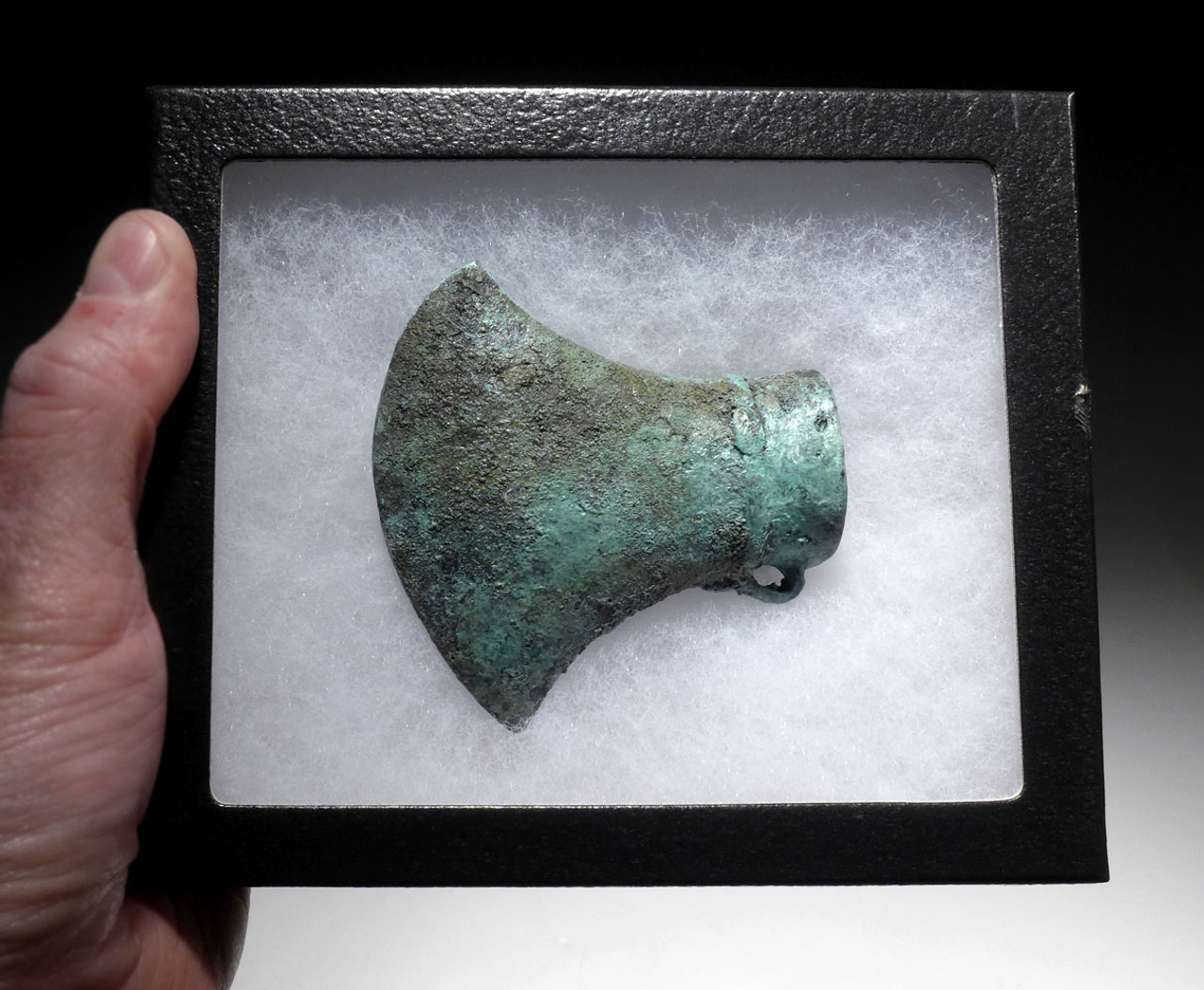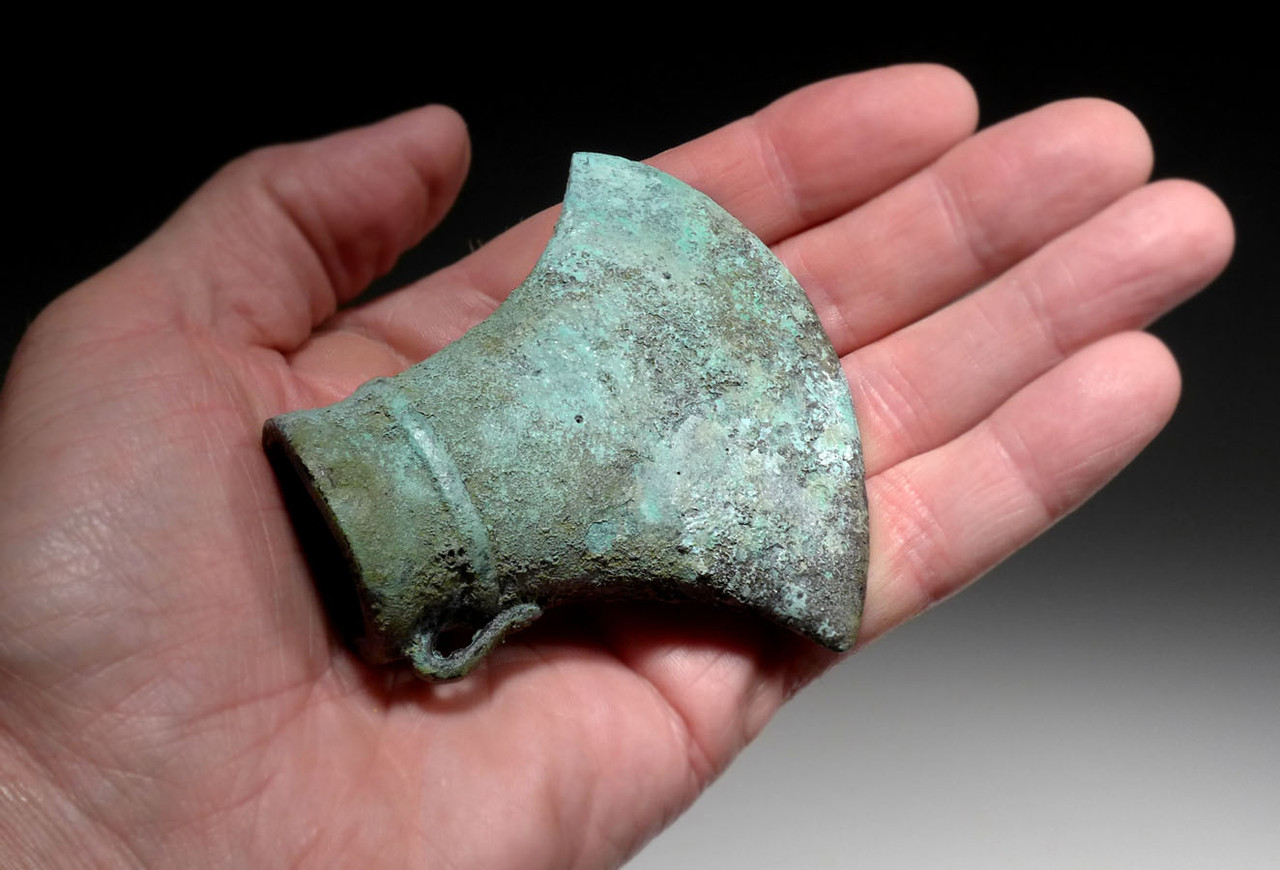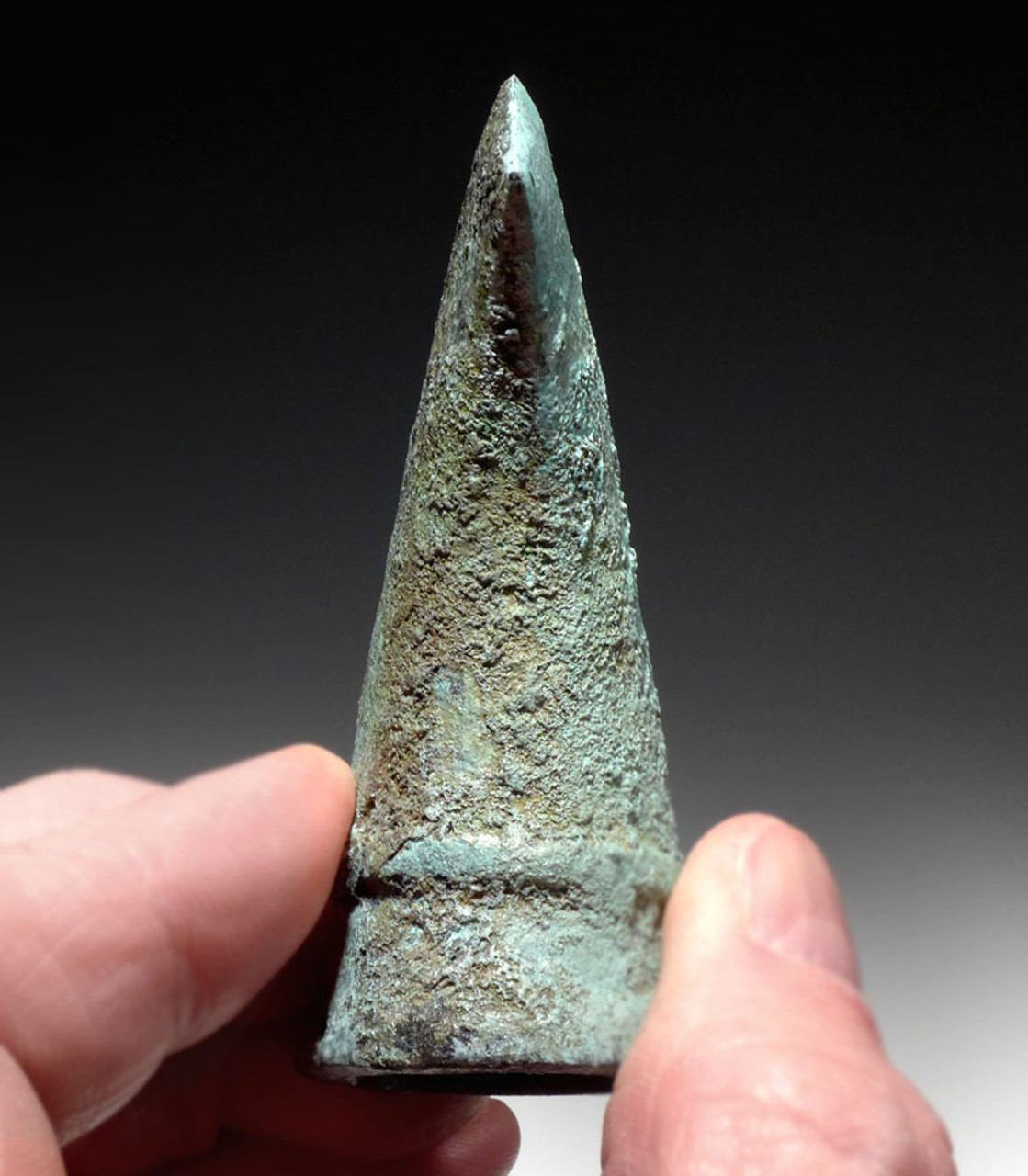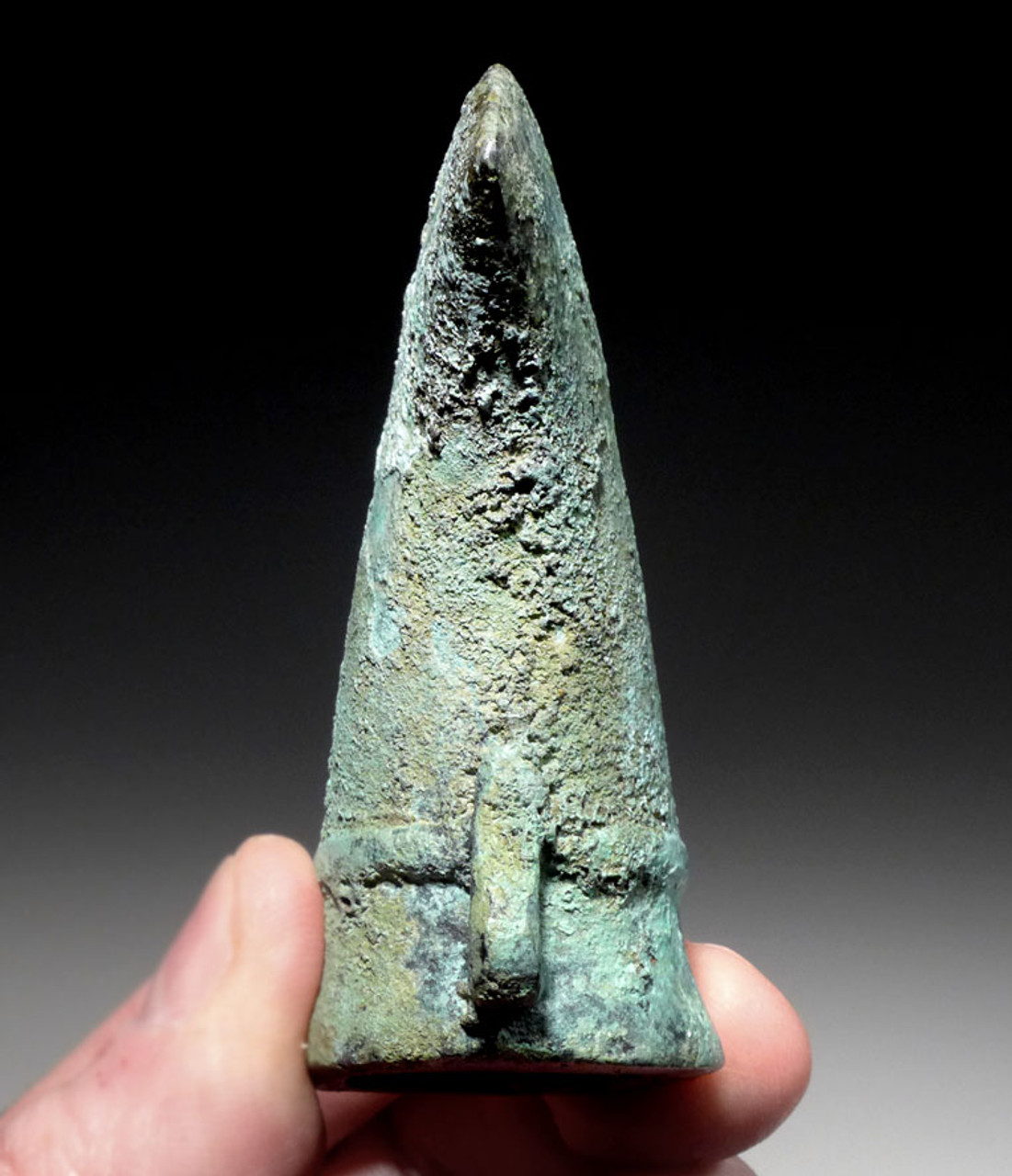Product Description
Ancient Celtic artifacts from France are very scarce. In addition, this beautiful flared bit hub war axe is of an unusual design as most axes of this type have a straight blade and body. This highly aesthetic combat axe would have been a very costly object of prestige in ancient times. The loop in the bottom of the axe body was designed to have prevented the loss of this expensive prestige weapon by tying a retaining cord around it and to the handle should the axe become broken in battle. A very highly recommended ancient weapon of a culture and region very rarely seen if ever, offered for sale.
SEE MORE ANCIENT CELTIC ARTIFACTS
HISTORY
Around 2000 B.C., barbarian Celtic tribes invaded Europe. They first inhabited regions across Eastern Europe now known as Hungary, Bulgaria, Romania and the Balkans. During the Bronze Age, they move westward and by the Iron Age in the 8th to 5th centuries BC, these tribes make their homes in what is now southwest Germany, eastern France and parts of Switzerland and Austria. This era is known as the Hallstat period named after a Celtic archaeological type-site in a lakeside village in Austria. After that, in the La Tene period, western Europe becomes heavily occupied by the Celts as they invade much of Germany, France, the Iberian Peninsula (Spain and Portugal), the British Islands and Ireland. After this time, Celtic tribes spread eastward again, moving into northern Italy, Bohemia, Silesia, the Balkans and even into present day Turkey with a tribe called the Galatians establishing a Celtic city called Galatia. During the 1st century BC, the Celts were at the height of their power and were the dominant ethnic group in much of Europe, even ruling over the Germanic tribes. Among the many military victories the ancient Celts can lay claim to are the sacking of the cities of Rome and Delphi.
The Celts were largely a decentralized military aristocracy made up of independent chieftains ruling various geographical regions. They were famous to fight just for the sake of fighting and often, they were employed as mercenaries of the great armies of ancient times. Along with their reputations of chivalry, courage and maniacal bravery, their more aggressive tendencies were offset by a great sensitivity to the arts and philosophy. Highly unusual at the time, the Celts viewed both men AND women with equality, holding women in high regard with their matriarchal religion.
One of the famous works the Celts were known for was their masterful works in metal-smithing. Spectacular works can be found all over Europe left behind by Celtic masters in gold, silver, bronze and later, in iron. Much of the influence of Bronze Age European metal ornament lends itself to the influence Celtic master craftspeople.
 US DOLLAR
US DOLLAR
 EURO
EURO
 AUSTRALIAN DOLLAR
AUSTRALIAN DOLLAR
 CANADIAN DOLLAR
CANADIAN DOLLAR
 POUND STERLING
POUND STERLING


















